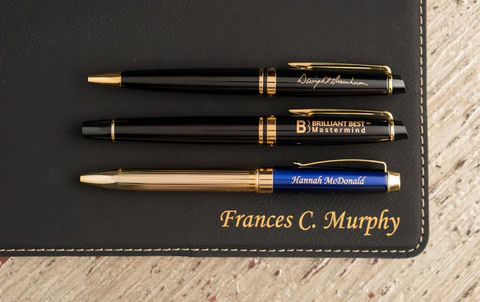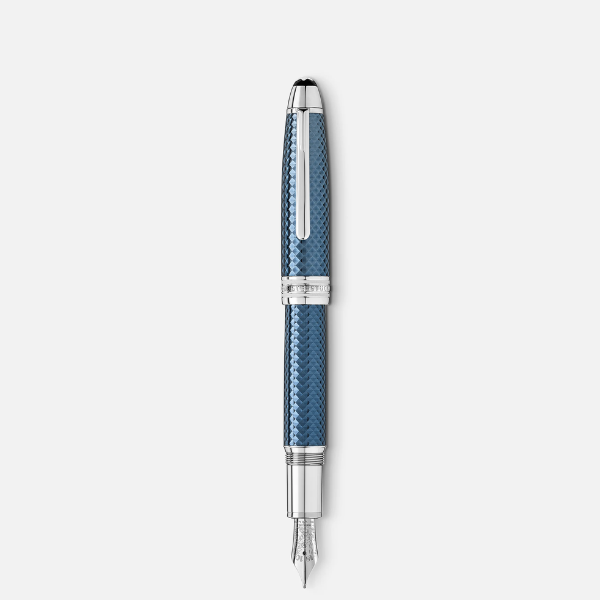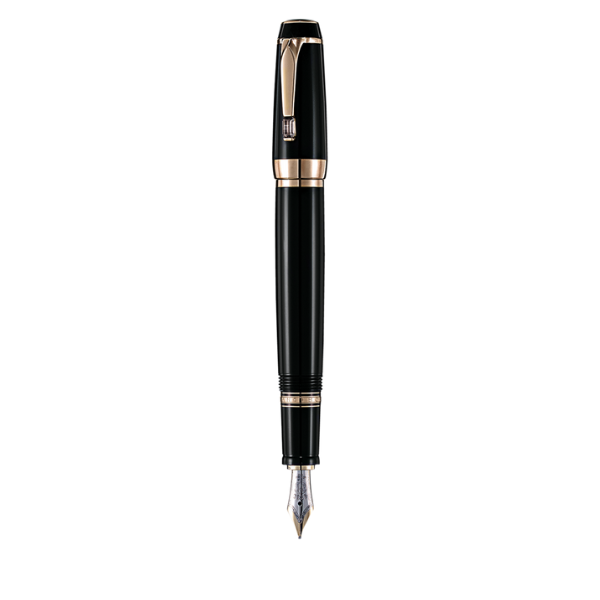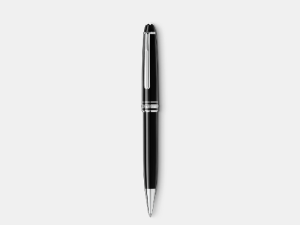The Manufacturing Process of Ballpoint Pens: A Step-by-Step Exploration
The ballpoint pen has become an indispensable tool in daily life and holds a significant place in the global market. Ubiquitous in offices, schools, and homes, these pens are celebrated for their convenience, reliability, and affordability. This exploration delves into the step-by-step manufacturing process of ballpoint pens, unraveling the intricacies behind this seemingly simple writing instrument. From the initial design phase to the final product that reaches consumers, each stage of production plays a crucial role in delivering the quality and functionality that users expect. By understanding the manufacturing journey of ballpoint pens, we gain insight into the blend of engineering, design, and material science that culminates in the creation of a pen that is an integral part of modern writing culture.

History and Evolution of the Ballpoint Pen
The ballpoint pen represents a remarkable journey of innovation and design in the history of writing instruments. Its invention in the late 1930s by László Bíró marked a significant turning point, introducing a pen that used a rolling ball to dispense ink, revolutionizing the way people write. Bíró’s design addressed the issues of fountain pens, such as ink smudging and leakage, providing a cleaner and more reliable writing experience.
Over the decades, the ballpoint pen has evolved from its early designs to the efficient and cost-effective models we use today. Key innovations have included the development of quick-drying, oil-based inks and advancements in ballpoint mechanics that ensure a smooth and continuous ink flow. The pen’s design has also been refined, with variations in size, shape, and materials to enhance ergonomics and appeal to a broader user base.
The history of the ballpoint pen is a testament to the ingenuity of inventors and manufacturers who have continuously sought to improve its design and functionality. From Bíró’s initial concept to the vast array of styles available today, the ballpoint pen has become a staple in the world of writing instruments, valued for its practicality and ease of use.
The Design Phase: Concept to Blueprint
The design phase of a ballpoint pen is where creativity meets functionality, laying the foundation for the manufacturing process. This phase begins with concept development, where designers brainstorm ideas, considering both the aesthetic appeal and practical use of the pen. Ergonomics play a crucial role, as the pen must be comfortable to hold and use, catering to a wide range of users with different writing styles and preferences.
Functionality is equally important, with a focus on the pen’s mechanics, such as ink delivery and the smoothness of the ballpoint mechanism. Designers also consider the aesthetics of the pen, including its shape, color, and material, to ensure that it is not only functional but also visually appealing.
Once the concept is solidified, it transitions into the blueprint stage, where detailed drawings and specifications are created. These blueprints serve as the guide for the manufacturing process, detailing every component of the pen, from the barrel and ink reservoir to the tip and ball mechanism. Advanced computer-aided design (CAD) software is often used in this phase to create precise models and simulations, allowing designers to refine the pen’s design and functionality before it moves into production.
The design phase is critical in the development of a ballpoint pen, as it sets the standard for what the final product will be. It is a meticulous process that balances innovation with practicality, ensuring that the pen not only looks good but also performs efficiently and reliably.

Raw Materials and Components
The manufacturing of ballpoint pens involves a variety of raw materials and components, each playing a vital role in the functionality and appearance of the final product. Understanding these elements provides insight into the complexity and precision required in pen manufacturing.
- Plastic: Often used for the barrel and cap, plastic is a common material in ballpoint pen production due to its durability, versatility, and cost-effectiveness. High-grade plastics like ABS (Acrylonitrile Butadiene Styrene) are favored for their strength and smooth finish.
- Metal: Components such as the tip, clip, and sometimes the entire barrel can be made of metal, adding weight and a premium feel to the pen. Stainless steel, brass, and aluminum are popular choices for their durability and aesthetic appeal.
- Ink: The ink in a ballpoint pen is a key component, typically oil-based, allowing it to dry quickly and avoid smudging. The ink formula includes pigments or dyes for color, along with a solvent and lubricant to ensure smooth flow through the ball mechanism.
- Ball: The tiny ball at the pen’s tip, usually made of tungsten carbide or steel, is crucial for the pen’s operation. It rolls within a socket to regulate ink flow and create consistent writing lines.
- Spring and Mechanism: For retractable pens, a spring mechanism controls the extension and retraction of the tip. This mechanism must be precise and durable to withstand repeated use.
Each component of the ballpoint pen is designed with care to ensure that the pen functions as intended, providing a reliable and smooth writing experience. The selection of raw materials and design of these components are critical steps in the manufacturing process, reflecting the pen’s quality and intended market position.
Step-by-Step Manufacturing Process
The manufacturing process of ballpoint pens involves several detailed steps, from creating the pen’s components to assembling the final product. Here’s a closer look at each stage:
1. Barrel and Cap Production
The production of the barrel and cap typically involves injection molding, where molten plastic is injected into molds shaped like the pen’s parts. High-precision machinery is used to ensure that each piece meets exact specifications for size, shape, and fit. Materials like plastic, metal, or composite are chosen based on the desired characteristics of the final product, such as weight, durability, and appearance.
2. Ink Preparation and Filling
Ink preparation is a critical process where the ink’s formula is carefully crafted to achieve the right viscosity, color, and drying time. The ink must flow smoothly from the reservoir through the ball mechanism to the paper without leaking or drying out prematurely. Once formulated, the ink is filled into the reservoir of the pen, often using automated filling machines to ensure precision and efficiency.
3. Assembling the Tip and Ball
The tip assembly is a meticulous process where the tiny ball is fitted into the tip’s socket, allowing it to roll freely while maintaining a tight seal to control ink flow. This assembly is crucial for the pen’s functionality, as it directly affects the smoothness of writing and the consistency of the ink line.
4. Final Assembly and Quality Control
In the final assembly stage, all the pen’s components, including the barrel, cap, ink reservoir, and tip assembly, are put together. Automated assembly lines are commonly used to streamline this process, ensuring each pen is constructed correctly. Following assembly, quality control checks are performed to verify that the pen meets all functional and aesthetic standards. This may include tests for ink flow, writing quality, and durability.
Each step in the manufacturing process of a ballpoint pen is essential in creating a reliable and efficient writing instrument. From the precision engineering of the barrel and tip to the careful formulation of the ink, the process combines advanced technology with meticulous craftsmanship to produce pens that meet the needs of users worldwide.

Packaging and Distribution
Once the manufacturing process is complete, the ballpoint pens move to the packaging phase, a critical step in preparing them for distribution and sale. Packaging serves multiple purposes: it protects the pens during transit, provides important product information, and serves as a marketing tool to attract consumers.
Packaging Process
The packaging process often begins with the pens being placed into bulk containers for safe transport to the packaging facility. Here, they may be individually wrapped or placed in protective casings, especially if they are premium models. The packaging design often reflects the brand’s image and the pen’s target market, with more luxurious pens receiving high-quality, aesthetically pleasing packaging.
Distribution Channels
After packaging, the pens are distributed through various channels to reach the end consumer. This distribution network can include wholesalers, retailers, online marketplaces, and direct sales from the manufacturer. The choice of distribution channels depends on the brand’s strategy, the type of pen, and the target market.
For instance, premium ballpoint pens might be sold in specialized stationery stores or luxury goods outlets, while more affordable models are distributed through mass-market retailers and school supply stores. Online sales have become increasingly important, offering a direct and convenient way for consumers to purchase pens.
The packaging and distribution processes are essential in ensuring that the ballpoint pens reach the consumers in perfect condition, ready to be used. They also play a significant role in the marketing and branding of the product, helping to establish and maintain the pen’s presence in the global market.
Innovations and Sustainability in Pen Manufacturing
The manufacturing of ballpoint pens has seen significant innovations and a growing emphasis on sustainability in recent years. These advancements are driven by technological progress, environmental concerns, and consumer demand for more eco-friendly products.
Innovations in Manufacturing
Innovation in the manufacturing process of ballpoint pens includes the integration of automation and precision engineering, which has led to increased efficiency, consistency, and quality in production. Advanced robotics and computer-controlled systems are now used to craft pen components with high precision, reducing material waste and energy consumption. Additionally, new materials and designs are continually being developed to improve the functionality and durability of pens, enhancing the writing experience for users.
Sustainability Practices
Sustainability has become a crucial aspect of the pen manufacturing industry. Many companies are now prioritizing the use of recycled materials in their pens and packaging to minimize environmental impact. Efforts are also made to reduce waste in the production process, with initiatives like recycling scrap materials and optimizing manufacturing operations to be more energy-efficient.
Moreover, companies are increasingly offering refillable pen models to encourage reuse and reduce the number of pens discarded. These models are designed to be easily disassembled and refilled, extending their lifespan and lessening their environmental footprint.
Eco-friendly Materials
The shift towards eco-friendly materials is evident in the choice of biodegradable plastics, recycled metals, and sustainable inks. These materials are selected for their reduced environmental impact, contributing to the broader goal of creating sustainable writing instruments.
In conclusion, the movement towards innovation and sustainability in ballpoint pen manufacturing reflects a commitment to environmental responsibility and consumer satisfaction. These efforts not only result in better quality pens but also contribute to a more sustainable future in the industry.
The manufacturing process of ballpoint pens is a complex journey from concept to consumer, encompassing a series of meticulous steps that ensure each pen meets the high standards of functionality and reliability expected by users. This exploration has shed light on the intricate processes involved, from the initial design phase and selection of materials to the precision engineering of components and the final assembly and quality control checks.
Understanding the complexities behind the manufacturing of ballpoint pens highlights the remarkable blend of technology, craftsmanship, and innovation required to produce these ubiquitous writing tools. Each stage of the process plays a crucial role in ensuring the final product not only writes smoothly but also embodies the quality and reliability synonymous with the pen’s brand.
In conclusion, the journey of creating a ballpoint pen is a testament to the ingenuity and precision of the manufacturing world, showcasing how a simple writing instrument is the result of a sophisticated and well-orchestrated process. It’s a process that ultimately brings to life an essential tool used by millions around the globe, emphasizing the pen’s enduring significance in our daily lives and the global market.
Recommended Montblanc Pens
-
Rated 5.00 out of 5
$2,055.00$1,399.00






